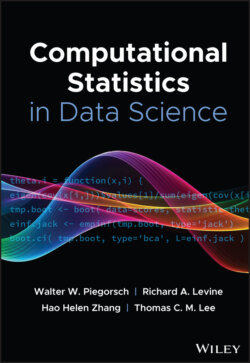Читать книгу Computational Statistics in Data Science - Группа авторов - Страница 65
5 The Future of Statistical Computing
ОглавлениеTwo key drivers will dictate statistical software moving forward: (i) Increased model complexity and (ii) increased data collection speed and sheer size (big data). These two factors will require software to be highly flexible – the languages must be easy to work with for small‐to‐medium data sets/models, while easily scaling to massive data sets/models. The software must give easy access to the latest computer hardware (including GPUs) and provide hassle‐free parallel distribution of tasks. To this end, successful statistical software must feature compiled/optimized code of the latest algorithms, parallelization, and cloud/cluster computing support. Likely, one tool will not meet all the demands, and therefore cross‐compatibility standards must be developed. Moreover, data visualization will become increasingly important (including virtual reality) for large, complex data sets where conventional inferential tools are suspect or without use.
The advantages of open‐source, community‐based development have been emphasized throughout – especially in the scholarly arena and with smaller businesses. The open‐source paradigm enables rapid software development with limited resources. However, commercial software with dedicated support services will appeal to certain markets, including medium‐to‐large businesses.
